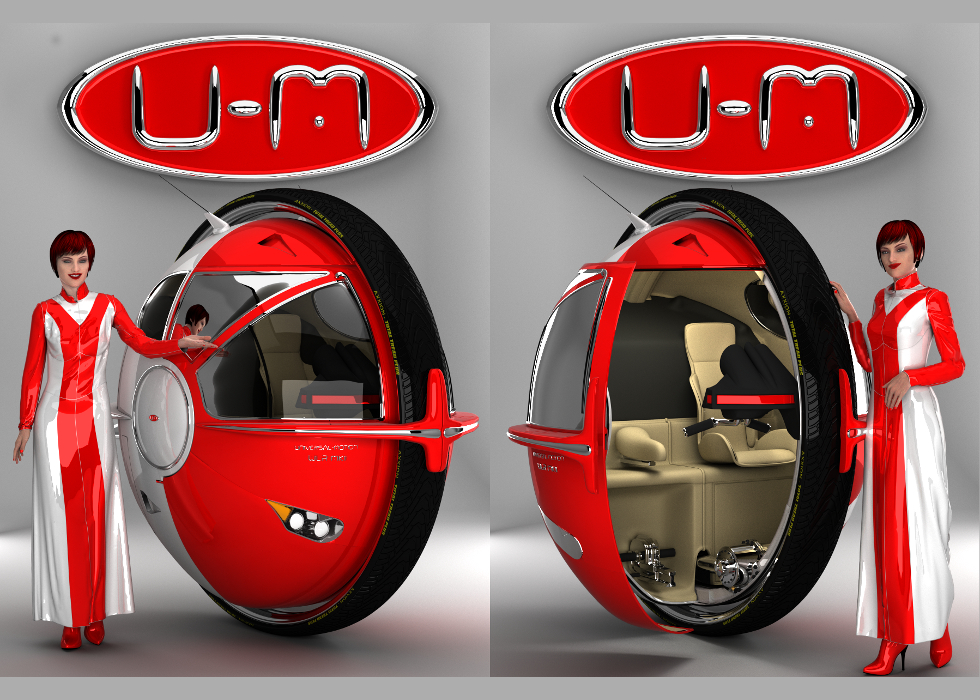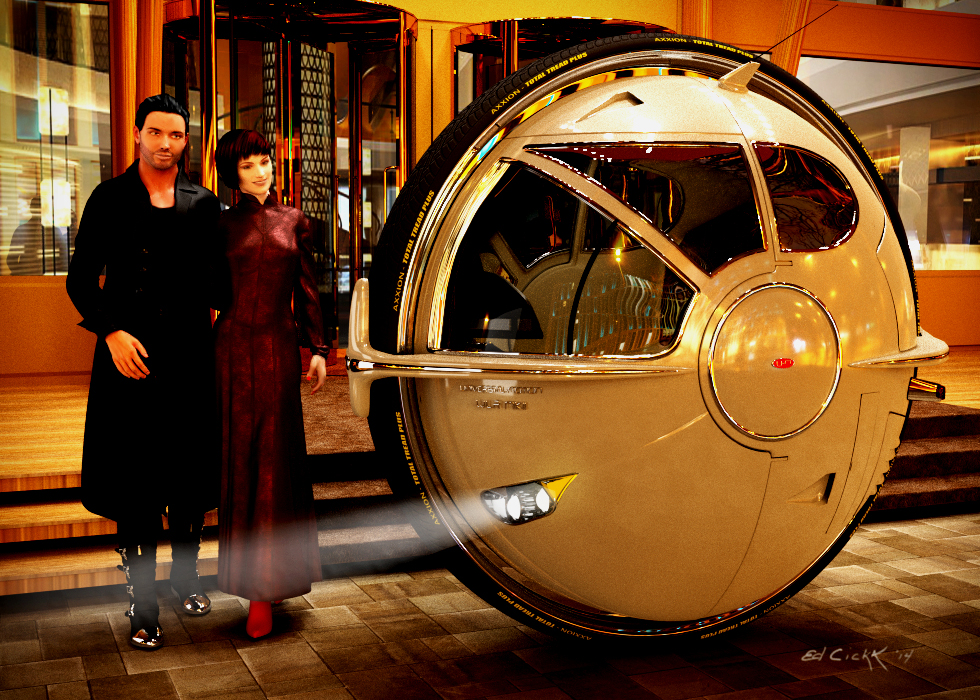BRIEF:
"The Universal-Motion WLR MkII provides highly efficient transport for today's driver. The use of advanced materials makes it possible to create a vehicle that is both powerful and responsive. The U-M engineered, fuel cell powered electric "FlowDrive" powertrain brings 150 kW of power to the wheel for exhilarating performance. Three drive selected ride modes direct the updated BTC (Balance Torque Converter) to provide the ride and handling performance necessary to deal with the traffic on today busy streets and highways.
"Highly appointed interior, with rich leather, polished chrome and mirror-finished mechanicals gives a richness unmatched by any other make. The advanced Holographic 3D instrumentation and 360 degree eye driven exterior cameras gives the driver the ultimate situational awareness. The newest and most advanced audio/visual system with an acoustically tuned interior provides unmatched sound quality.
"The WRL Mk II is not just a luxury vehicle. With the largest boot space and load capability of any personal mono-wheel and towing capacity of over 450kg (with added "Tow Package") along with keyless remote entry/security system that unlocks the doors and can even open the boot on command, the WLR MkII is also extremely practical .
"Move beyond your daily transport to the realm of grace and sophistication. Stop by your local U-M dealership soon."
WORKFLOW:
This concept started as several sketches and concept drawings. One design had the body encasing the wheel with an accordion style door in the front. The second design put the wheel on the outside of the car and used clamshell style doors. Initial designs were developed early in Blender and 3D prints were completed to determine the best shape. It became apparent early that the accordion style doors did not function well and would be problematic for the driver and passenger. Also, having the wheel enclosed inside the cab made it necessary to encase it so that water and road grime would not come into the car. Finally, if the tire had to be changed, a side of the car would have to come off to provide access.
The clamshell styling did away with all the disadvantages of the other design. It also provided a more streamlined look to the vehicle. Once both models were rendered, it become obvious that the clamshell design was far more desirable.
Once a design decision was reached, the assets necessary to build out the finalized illustrations could be developed and built in Blender and DAZ|Studio. Some changes to design occurred during the modeling process, yet the overall shape and concepts remained consistent.
From a practicality perspective, any mono-wheel design has two major hurdles to overcome. One is the driver / passenger package. A circle is not the easiest geometry to fit a human body into comfortably. Early packaging design had both the driver and passenger sitting shoulder to shoulder in convential seats. In this configuration, it became difficult to determine where to put the feet occupants. Playing with several different driver positions, it became apperent that putting the drive in a forward leaning position, like on a motor cycle, would provide many solutions. It had the benefit of putting the driver's feet in a wider spot of the body. It would also give the driver a more "sporting" feel since the wheel will lean into curves at speed. It also forced the center of gravity a little further forward, easing fore/aft balance concerns. The passenger's position is a more traditional seat placed slightly behind the driver. Because we can have the passenger's feet flat on the floor below the seat, the positioning is more natural.
The second issue to overcome was balance. How do you balance the vehicle when there is only a driver, or with heavy load in the boot? The BTC (Balance Torque Converter) system solves this problem by moving major components around the interior of the vehicle. For example, the drive transmission (the visible unit sitting on the floor between the driver and passenger), along with the electric motor, can be shifted fore and aft in milliseconds to balance the torque applied to the wheel, the weight of the driver and loads placed in the boot. Also, the 90 kg fuel cell is placed on a slide under the passenger seat. When there is no passenger in the vehicle, the battery moves outboard under the passenger seat to balance the driver. With a passenger, the BTC moves the fuel cell inboard toward the centerline of the vehicle. There are four sets of fluid bladders placed throughout the vehicle that are filled with a "liquid metal compound" that can be transferred from one side to the other to provide trim balance while in motion. All of these adjustments happen automatically, based upon one of three ride modes selected.
One final challenge is how to balance the vehicle when power is off. All of the balance systems are automatic and require power. Yet leaving the vehicle powered up when not in use is wasteful. There is simple solution, kickstands. The narrow doors just aft of the bottom air intake are for two hydraulic kickstands that come out of the vehicle and lock into position. Once deployed, no further power is necessary.



